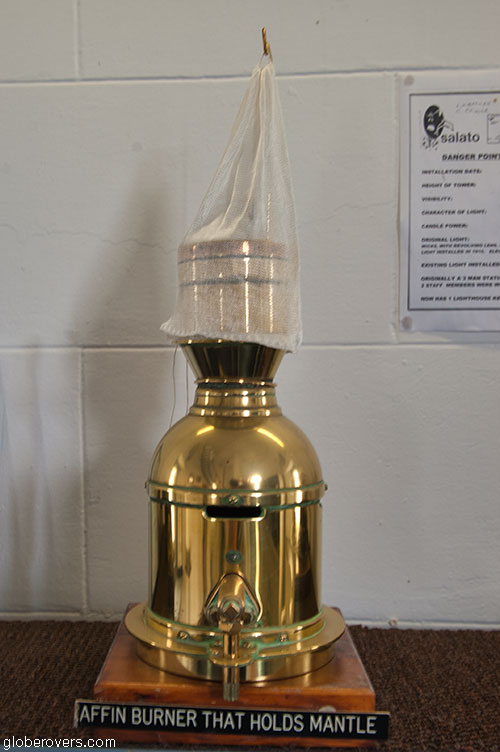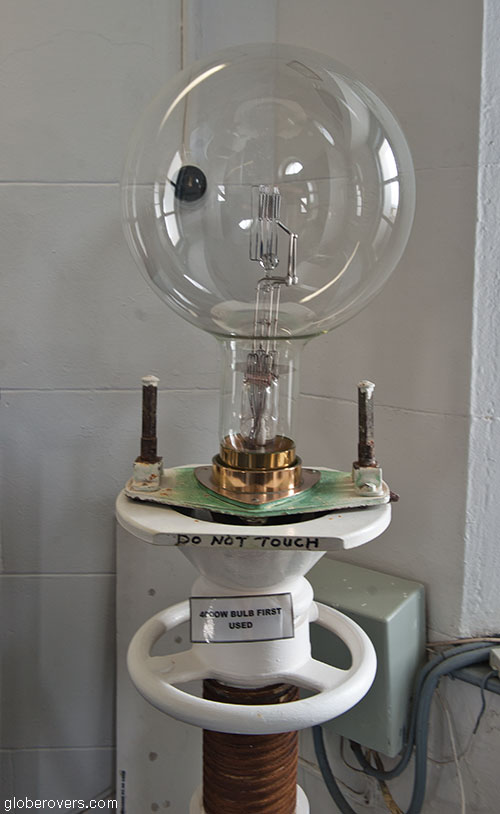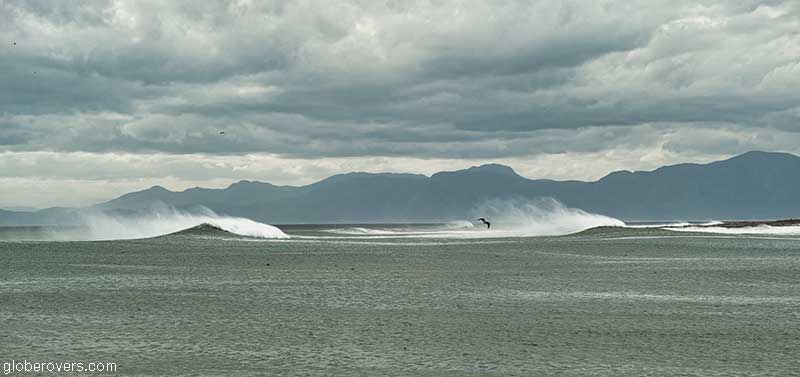
In our series, VillageLIFE, Janet-Lynn Vorster takes us around the coastal areas of Gansbaai, the Danger Point Lighthouse, and she investigates the history behind the shipwrecks at Danger Point in South Africa’s Western Cape Province.
Why travel to Danger Point near Gansbaai?
- The low-down: The area is rugged and beautiful. Waves crash relentlessly into the sharp-edged rocks. Come see the shipwrecks, lighthouse, wildflowers and sharks.
- The brightest highlight: The old lighthouse guards over the rugged coastline. A lighthouse with a long and interesting history.
- Intrepid destination: Few tourists make it out this way, in particular when it is windy, which is most of the time. An off-the-beaten-track destination for sure!
- Globerovers score (10 is highest): This is a place where you can sit for hours just watching the waves and thinking back the turbulent history of this part of the world. The only force that will drive you away is the strong blowing wind. I’ll score it 8/10.

Written by Janet-Lynn Vorster
Photos by GlobeRovers, Janet-Lynn Vorster, and others
Table of Contents
Gansbaai – the Gateway
The great white shark capital of the world, Gansbaai, meaning “Goose Bay”, is just over two hours from Cape Town, 162 km via the N2 and R43 highways. In the previous issue of Globerovers (July 2017), much was written on this town and the area, with separate articles on the great white sharks and penguins.
Gansbaai is an unspoilt area, stretching along the coastline with the Atlantic on one side and fynbos-covered mountains on the other. It is home to the Marine Big Five: bottlenose dolphins, Cape fur seals, African penguins, great white sharks, and the southern right whales.
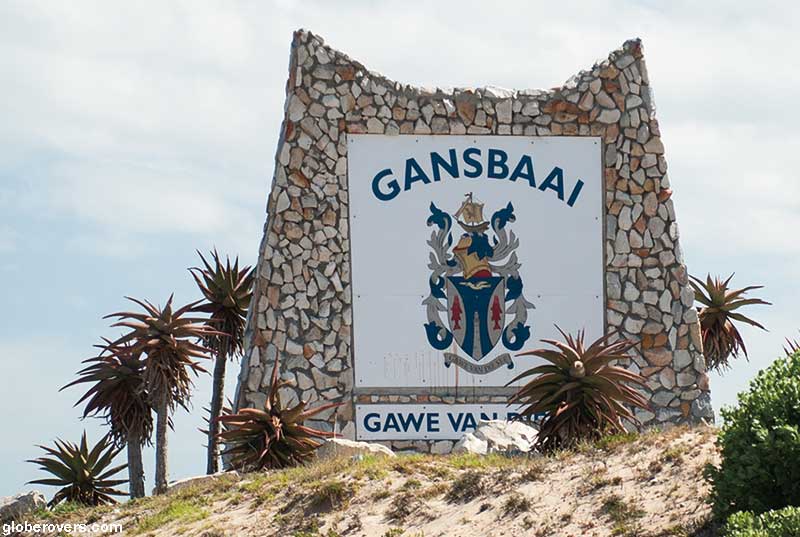
The shoreline varies from endless white sandy beaches, to rockpools, caves, and rocky cliffs.
Dyer Island, roughly eight kilometres offshore, is the largest of a group of tiny islands. Adjacent to Dyer Island is Geyser Rock, home to a colony of about 60,000 Cape fur seals. “Shark Alley” is the narrow channel (240 m wide) of water separating these two islands, constantly patrolled by great white sharks.
Gansbaai is home to the White Shark Diving Company with its famous shark cage diving, marine conservation programs, and international volunteers. Book a shark cage diving trip if you want to get up-close and personal with these apex predators.
Ivanhoe Sea Safaris, regarded as one the leading boat-based whale watching companies in South Africa, launches from the quaint fishing harbour of Gansbaai.
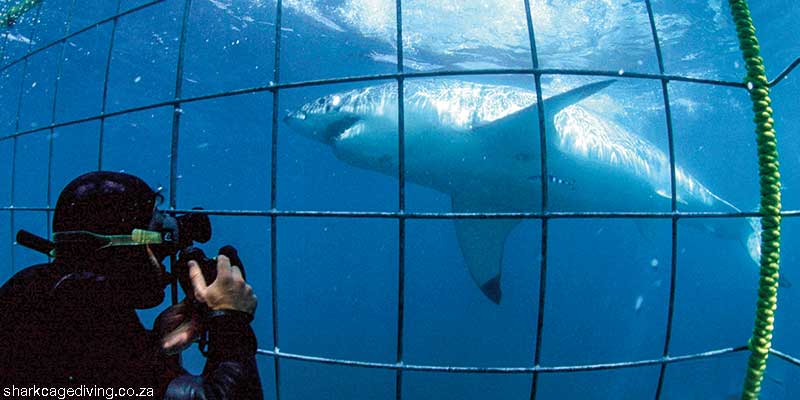
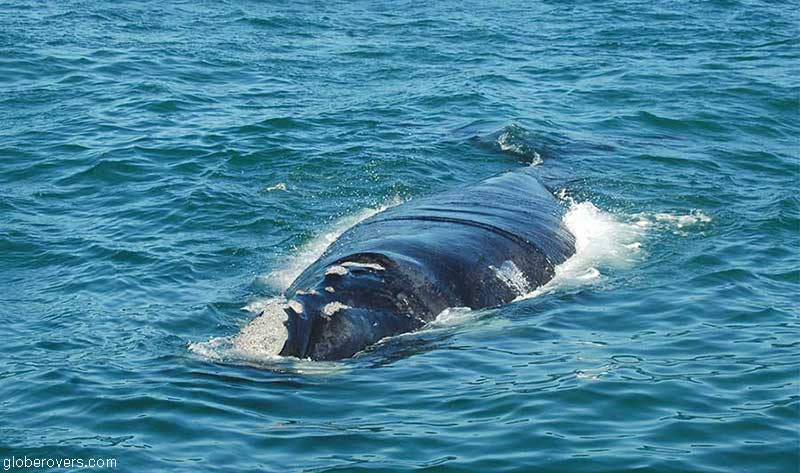
Danger Point Lighthouse and the Forgotten Era of Lighthouse Keepers
The name Danger Point in Walker Bay, Gansbaai, says it all. The many reefs and rocks under the ocean’s surface make this stretch of ocean one of the most treacherous in the world.
Today, the 18,3 metres tall octagonal lighthouse with balcony and lantern serves as a powerful warning for 27 nautical miles (50 km) and reminds one of the thousands of lives lost off this coast over the centuries. At least seven wrecks are littered on the rocks beneath this lighthouse.
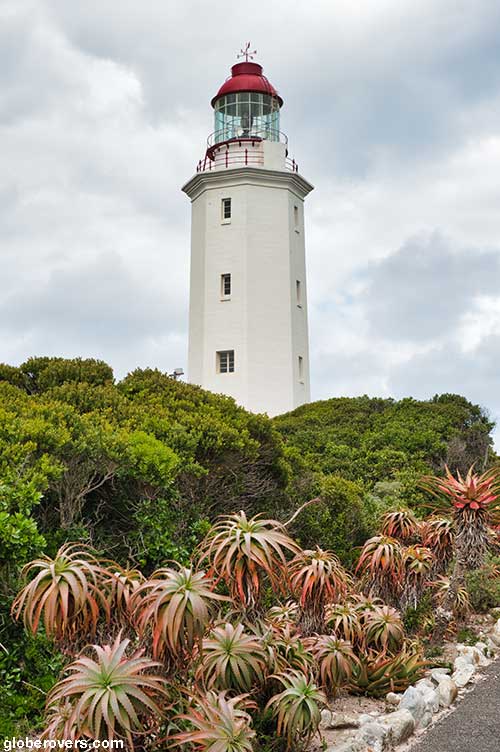
The lighthouse, with co-ordinates 34°37’49.0”S 19°18’08.9”E, was built in 1894 and officially opened on January 1st, 1895, and lies at the end of a scenic drive. The distinctive day marker is the white octagonal tower with its red lantern dome. It was originally painted with vertical red and white stripes.
From May to September it may be visited by reservation only. From October to April it is open to the public from 10h00 to 15h00. What a beautiful setting! Climb the 99 steps for a breathtaking 360 degrees view over the ocean and the peninsula.
Koos de Kock – Lighthouse Keeper until 1995
Koos took me into his “braai kamer” (BBQ room) that resembles a lighthouse museum with photos, certificates, accolades, newspaper clippings and more adorning the walls.
He retired in Gansbaai, after working as lighthouse keeper at Danger Point Lighthouse for nine years, from September 17th, 1986 to end of August 1995. This was the last the lighthouses he worked at, but by no means the only one. He says this was his favourite lighthouse.
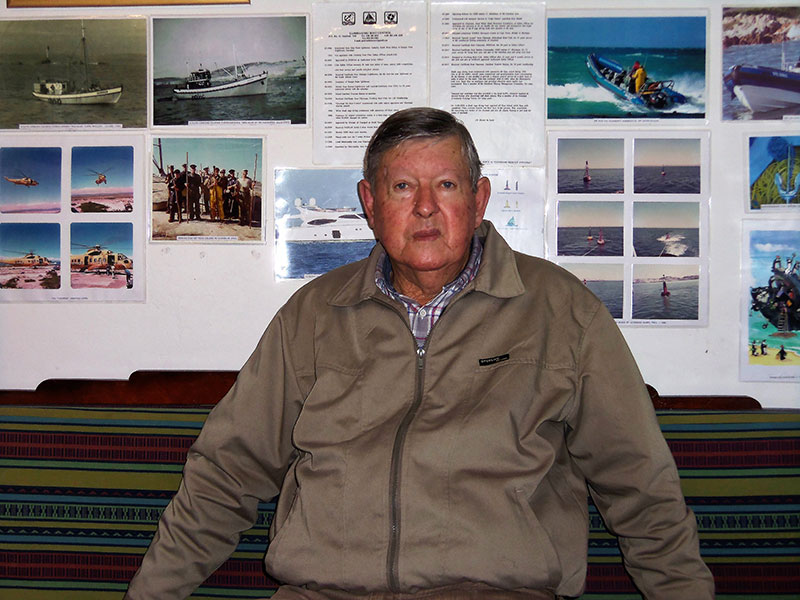
In 1994, Koos received an accolade for being the best lighthouse keeper at a one-man lighthouse on the South African coast, in the first year of the inception of this award. He is a proud man who took his lighthouse uniform and job seriously and has a very proud family history of lighthouse service.
Koos started life on an island just off the coast of Luderitz in Namibia. When he was a young boy, his father was transferred to Malgas Island, a small island about 800 metres off the coast of Saldanha Bay in South Africa. In 1947 when he started school, his father was transferred to the mainland of Saldanha and given an island-boat to get to the island and back. Koos attended Saldanha Primary, and attended a boarding school in Vredenburg for his high school years, as it was too far to commute daily from Saldanha.
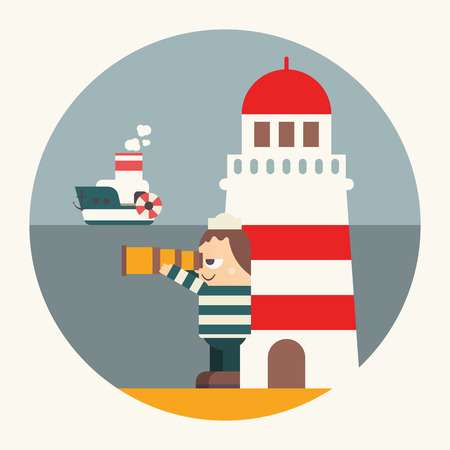
He grew up on the sea, knew it well, and loved it. He has very happy childhood memories.
His younger brother was born while they lived on Malgas Island, and Koos recalls the tedious process of sending a messenger in a rowing boat to shore followed by a mile-and-a-half walk to the nearest telephone to get a doctor to come out to the island from Vredenburg for the birth. However, by the time he arrived, the birth had been successfully attended to. Chuckling, he recalls an episode as a young boy where he howled and screamed as he was put into a sack and lowered from a larger boat onto a smaller boat to get to an island.
In 1959, he attended SAS Saldanha, the South African Navy, to do a year of national service training.
In 1958 and 1960 (the year before and after his naval service), Koos worked on a big island boat with his dad. They shipped supplies and family members to the lighthouses at Bird Island (near Port Elizabeth) and Dassen Island (near Yzerfontein) every two weeks, and to the Saldanha islands every week. It was during this time that Koos knew he would become a lighthouse keeper. He started his five years apprenticeship on August 1st, 1960.
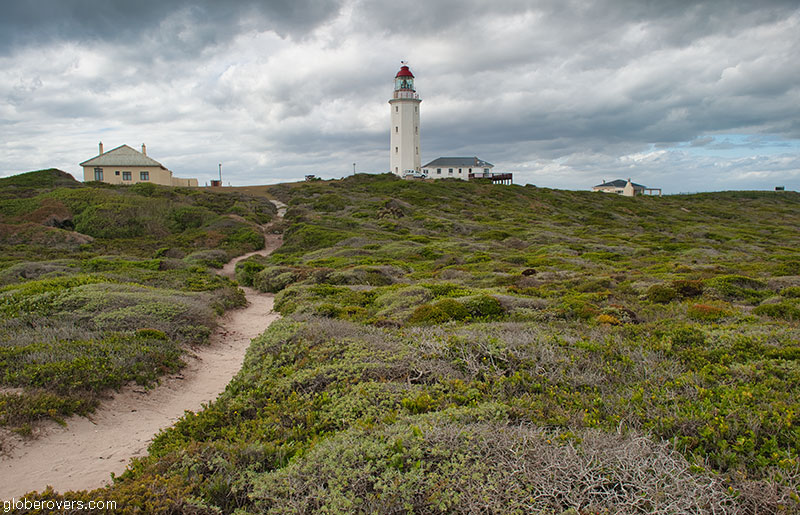
Before lighthouses were automated, they were all three-man stations plus a general worker, so each lighthouse had four “houses”. With modern technology, lighthouses are now manned by one person only, and their job is more supervisory. Some of the remote lighthouses are completely automated.
A typical day at a lighthouse in South Africa looked like this (before automation):
Three shifts daily, each shift run by one of the three lighthouse keepers, with 4 days off per month.
Once an hour a logbook had to be filled out. Many lighthouses were first-order weather stations, and data was phoned in every morning at eight o’clock. They kept meticulous records of the weather: sea conditions, temperature, atmospheric pressure, humidity, wind speed, wind direction, precipitation, cloud formations, cloud cover, and visibility.
Maintenance work, as the unforgiving coastal weather turned metal to rust. The painting of the lighthouse and tower was the duty of the lighthouse keepers, and not the general worker.
Before electricity, the light in all its stages of progress took a lot of manual upkeep and time.

Old paraffin lamp 
First electric bulb
Koos fondly remembers taking a sheik from Saudi Arabia shark diving. The sheik was airlifted per helicopter from Cape Town to Gansbaai, and using a boat that came all the way from Mauritius (over 4,000 km to the northeast), Koos took him from the mainland at Gansbaai to where the shark diving boat was anchored near the islands and back again in the same fashion after his dive.
Once he helped to move 700 penguin chicks off an island (in one day), whose parents moulted at an inopportune time due to climate change, resulting in them not going into the ocean to fish for three to four weeks. The chicks would have died. Thank goodness they now have the African Penguin and Seabird Sanctuary in Gansbaai to alleviate transporting these chicks long distances. Do visit the sanctuary as it is on the way to the lighthouse. They feed the penguins at 15h00 in the afternoons.
Koos has helped with two shipwrecks – a Taiwanese long line fishing vessel that ran aground at Pearly Beach and a ship that ran aground at Die Plaat which he managed to tow out to sea again.
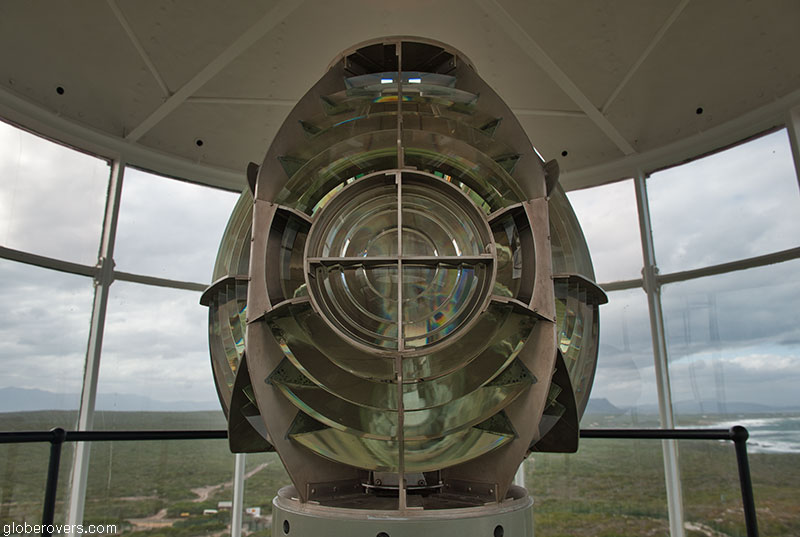
One Sunday morning at Danger Point Lighthouse, while sitting in the office listening to a church service on the radio, he saw a stowaway come ashore on a raft made from four paraffin tins. There were originally two stowaways, but one drowned. He gave him a cup of coffee and sandwiches and phoned the police who came to fetch him and took him away.
Koos is well trained in life saving, and has helped many distressed seamen and boats. He worked full time for the Hermanus National Sea Rescue Institute from 2004 onwards together with his lighthouse duties, and received recognition for 11 years of faithful service. Safety is a very important part of Koos’ life, and he was involved in many organisations and conducted inspections to uphold safety regulations. His accolades are plentiful!
Sometimes I find progress sad as it replaces jobs and people filled with passion, nostalgia and purpose, I concluded after listening to Koos’ life story from a forgotten but important era in maritime history.
The Most Famous Shipwreck at Danger Point – the HMS Birkenhead
Stories about shipwrecks and ghosts are rife in this town! This coastline has repeatedly taken its toll. Especially so in the days before echo sounders were developed to allow hydrographers to chart the oceans. Myth has it that legendary ghost ship, the Flying Dutchman, was spotted for the very first time from Danger Point.
The HMS Birkenhead docked briefly at Simonstown, near Cape Town, on February 23rd, 1852. Most of the women and children disembarked here and a few sick soldiers. Reportedly, nine cavalry horses, several bales of hay and 35 tons of coal were loaded here for the last leg of the voyage carrying troops and their families to Port Elizabeth.
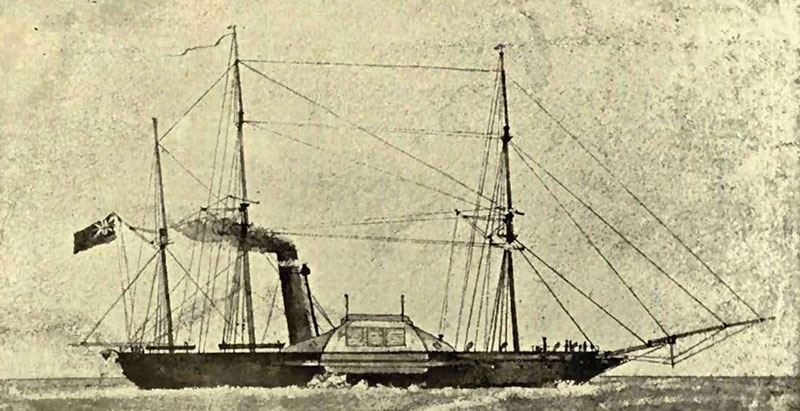
It is documented that the sea was calm, the night was clear, and the HMS Birkenhead was hugging the shoreline, sailing at a speed of 8 knots (15 km/h). Shortly before 02h00 she struck an uncharted rock at 34°38’42”S 19°17’9”E, one-and-a-half kilometres off the coast of Danger Point.
She sank to her watery grave on Wednesday February 26th, 1852. It took a mere 25 minutes to sink to a depth of 21 metres.
The Birkenhead became famous for being the first shipwreck where the “women and children first” protocol was applied, known today as the “Birkenhead Drill”. All the women and children were brought to shore safely, and some of the men made it to shore, but over 440 men perished on that fateful day.
It was also reputed to be carrying about three tons of gold, secretly stored in the powder-room, which has never been found.
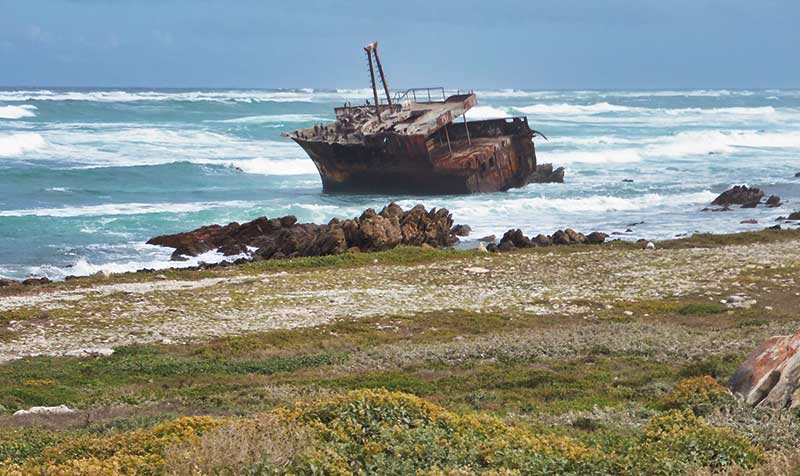
A letter from Lieutenant J.F. Girardot to his father, March 1st, 1852 reads as follows, and I quote from military.wikia.com: “I remained on the wreck until she went down; the suction took me down some way, and a man got hold of my leg, but I managed to kick him off and came up and struck out for some pieces of wood that were on the water and started for land, about two miles off. I was in the water about five hours, as the shore was so rocky and the surf ran so high that a great many were lost trying to land. Nearly all those that took to the water without their clothes on were taken by sharks; hundreds of them were all round us, and I saw men taken by them close to me, but as I was dressed (having on a flannel shirt and trousers) they preferred the others. I was not in the least hurt, and am happy to say, kept my head clear; most of the officers lost their lives from losing their presence of mind and trying to take money with them, and from not throwing off their coats.”
Of the nine horses on board, eight managed to swim to land.
André Hartman
André Hartman, who resides in Gansbaai, is a spear fisherman who represented the South African team for five years. He later got involved in wreck diving. I had a fascinating morning listening to André’s stories ranging from diving expeditions to shark encounters and sunken ships. He has retired from diving.
When diving down to search the Birkenhead, he and his diving partners found a handful of coins from officers’ wallets, but there was no sign of the three tons of gold.
They had proof that the gold was loaded from studying the archives of the admiralty (the department of the British government that once had control over all naval affairs). However, they could not obtain a copy of the documents. In the Birkenhead trial the purser (the person on a ship principally responsible for the handling of money) said 120 boxes of gold were loaded.
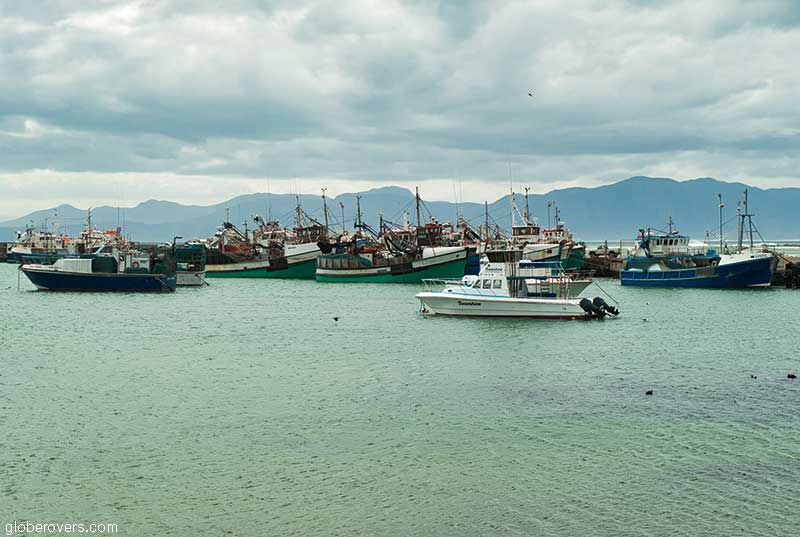
They got a letter from the Prince of Whales permitting them to work the wreck. They were however not allowed to move the bodies, as it is a war grave and heritage site. Every year families of the deceased still fly to the Danger Point Lighthouse, from where they sail out to the wreck and throw wreaths.
André has his own theory about the gold, believing the gold was offloaded in secret in Simonstown before the ship sank. It took three months for a ship to sail back to England in those days before the incident could be reported. This left many months in which the gold could have been moved and distributed.
Jaco Boshoff, Maritime Archaeologist, Iziko Museums
Jaco is a maritime archaeologist at Iziko Museums. He has always been interested in history, but found it very restrictive at school, where he learnt a little about archaeology and decided to study it. That was where he became interested in shipwrecks.
Archaeologists work either for themselves, universities, or museums. Museum archaeologists do a lot of research themselves, and are a different species, Jaco says, working more with collections.
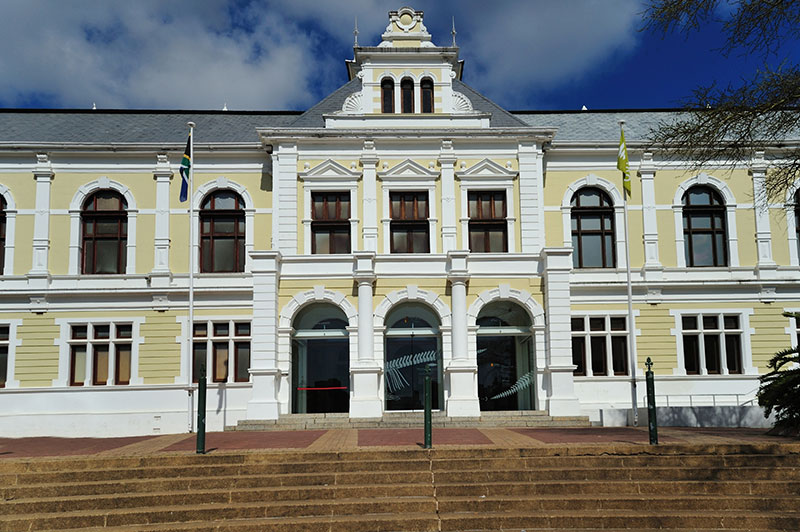
For archaeologists, the importance of the Birkenhead was that the construction of this vessel was unique. She was a hybrid construction ship and one of the first paddle wheelers that came across to the South African shores.
My research shows that she was powered by two single-piston engines, 350 horse power combined, connected to a pair of paddle wheels positioned on the outside of the hull, each six metres in diameter. It was one of the first of the Royal Navy’s iron steamships, still combined with sails though, which evolved from the wooden sailing vessels, reflecting the transition from wood to iron.
Jaco says that sadly treasure hunters removed a lot of these unique features and now that history is lost forever.
Regarding the Birkenhead Drill of “women and children first”: there was a shipwreck in Table Bay, ten years earlier in 1842, and they also adhered to the “women and children first” protocol, as it was common practice among the Royal Navy. However, as there was no loss of life, it was not highly publicised. So, although this drill is accredited to the Birkenhead, it was only significant because of the loss of lives being only men.

Maritime archaeologists don’t dive in dangerous conditions, and follow strict rules and regulations. Most of the diving they do is shallow diving, although this has its own dangers. To work as a diver requires a fairly stringent qualification, not a sport diving background, as one cannot work as an archaeologist without a professional diving qualification. Jaco laughs and reminds me it is not an Indiana Jones kind of job.
Excavation gear consists of a vacuum cleaner type suction device, and each object is carefully lifted with various unique methods. Archaeology is basically a forensic investigation, and each component of a wreck is carefully recorded, and notes made of where it was found, like on a crime scene. Each item removed from a wreck must be treated and conserved. It is removed from its stable underwater site where it has adapted to the environment, and needs to be stabilised in a new environment in a laboratory, so they only remove what they can conserve. Removing anything more is viewed as vandalism.
Every object has its own process: different chemicals, different physical techniques. The Waterlogged Objects Conservator is the person in the lab who specialises in this very complicated field of expertise.
The legalities surrounding a wreck depend on treaties and agreements in place between countries, and whether other countries claim the wrecks or not. Generally, wrecks in the territorial waters of South Africa are government property. There are never really any issues, except with the Birkenhead, as there was an agreement between South African- and British governments, so some objects went to the Imperial War Museum in the United Kingdom. Archaeological sites require permits before diving can commence on the wreck.
Places of interest to learn more of South Africa’s maritime history:
- Danger Point Lighthouse
- Cape Agulhas lighthouse
- Iziko Maritime Centre at the V & A Waterfront in Cape Town
- Slave Lodge in Cape Town
- Shipwreck Museum in Bredasdorp.
For more information about Gansbaai and area, visit the Gansbaai Information Centre:
– www.gansbaaiinfo.com
– facebook.com/GansbaaiTourism
– twitter.com/GansbaaiTourism
☛ Read more: Africa’s Southernmost Lighthouse and Ship Graveyard
☛ Read more: Baardskeerdersbos – The Overberg’s Artist Town

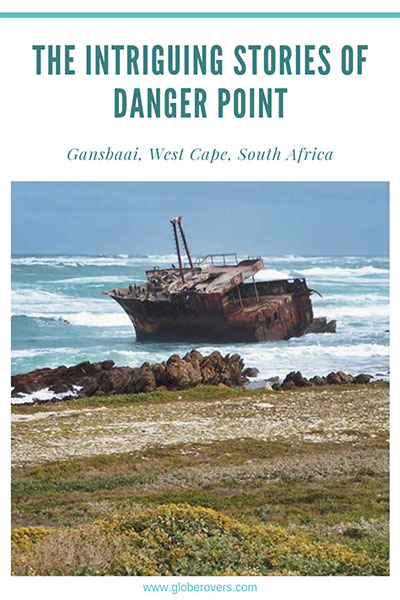
Further reading

Janet-Lynn is a numerologist by profession, and journalist, editor and photographer by hobby. She is the proud mother of three grown children and granny to three grandchildren.

